Welcome to a journey through the versatile world of hemp, the miraculous plant often unjustly shadowed by its controversial cousin, cannabis. Despite misconceptions, hemp is an agricultural darling with a rich history and a plethora of benefits. Its varied uses span from wellness applications to sustainable material innovations.
Through this guide, we’ll illuminate the multifaceted benefits of hemp, presenting the facts, busting the myths, and celebrating the potential that this humble plant holds for our health, environment, and economy. Adding hemp seeds to your diet may be just what you need to live a healthier life.
A Historical Overview of Hemp
Tracing back several millennia, hemp’s historical tapestry is rich and complex. The plant, scientifically known as Cannabis sativa, was cultivated by humans as early as 8000 BCE, with evidence of hemp cord in pottery shards discovered in ancient Mesopotamia (present-day Iran and Iraq).
Fast forward to the 16th century, and hemp had become a staple crop for European settlers who introduced it to North America. Hemp was a multifunctional plant that shaped civilizations and was used to produce ropes, sails, clothing, and more.
Unfortunately, the 20th century saw a decline in hemp cultivation due to its association with marijuana and the resultant legal complications. Today, however, hemp is experiencing a resurgence as we rediscover its remarkable applications in numerous sectors.
Understanding the Composition of Hemp
Hemp is a botanical marvel composed of several valuable components. First are the seeds, a nutrition-rich powerhouse packed with proteins, healthy fats, and fiber. Next, we find the flowers and leaves, which contain compounds called cannabinoids, the most notable being cannabidiol (CBD).
Unlike its relative THC found predominantly in marijuana, CBD is non-intoxicating. Moreover, hemp’s stalk is rich in cellulose and provides durable fibers, while the plant’s roots can absorb and sequester environmental toxins, aiding soil remediation.
Nutritional Powerhouse: Hemp Seeds
Aptly dubbed a “superfood,” hemp seeds are an excellent addition to your diet. They are a terrific source of complete protein, containing all nine essential amino acids our bodies can’t produce independently. Moreover, these small but mighty seeds are rich in omega-3 and omega-6 fatty acids, promoting cardiovascular health and immune response.
Additionally, whole hemp seeds contain a wealth of vitamins and minerals, including Vitamin E, phosphorus, potassium, sodium, magnesium, sulfur, calcium, iron, and zinc. To top it all off, eating hemp seeds is also an excellent source of dietary fiber, contributing to digestive health.
Unraveling the Health Benefits of Hemp Oil
Hemp seed oil, derived primarily from hemp plant seeds, comes loaded with several health benefits. With its generous fatty acid content, hemp oil can support heart health and counteract inflammation. Gamma-linolenic acid (GLA) also promotes the body’s natural production of beneficial hormones, which can alleviate issues like inflammation and skin conditions.
Beyond that, the nutrient-dense oil can also support brain health, thanks to the essential fatty acids for brain development. Lastly, the oil’s topical applications shouldn’t be overlooked. Consuming hemp seeds is excellent for skin health, offering moisturizing and anti-aging properties while controlling skin inflammation, thus making it a popular ingredient in many skincare products.
Cannabidiol (CBD) in Hemp: A Panacea?
Cannabidiol (CBD) is one of the major cannabinoids found in the hemp and cannabis plant. CBD has garnered substantial attention in recent years due to its potential therapeutic effects, without the intoxicating impact associated with THC. While it’s not a cure-all, scientific studies suggest CBD may alleviate various health issues. These include chronic pain, inflammation, anxiety, and sleep disorders.
Some research also indicates that CBD might have neuroprotective properties and potential benefits for heart health. CBD’s effectiveness is linked to our bodies’ endocannabinoid system (ECS), which plays a crucial role in maintaining physiological homeostasis. While more research is needed to understand the scope of CBD’s potential benefits fully, it certainly shows promise as a versatile therapeutic agent.
The Therapeutic Potential of Hemp for Skin Care
Hemp, especially in the form of hemp oil, has made a splash in the skincare industry, and for good reason. Rich in vitamins, including skin-friendly Vitamin E, and fatty acids, hemp oil can deeply nourish and moisturize the skin. The oil’s anti-inflammatory properties, courtesy of its gamma-linolenic acid (GLA) content, can also be beneficial in managing conditions like acne, psoriasis, and eczema.
In addition, the antioxidants in hemp oil help combat signs of aging by mitigating damage caused by free radicals. From moisturizing creams and serums that include hemp milk to soothing balms, these products are increasingly embraced for promoting skin health and natural beauty.
Hemp Fibers: Sustainable Solutions for the Textile Industry
Hemp fibers offer a greener alternative for the textile industry. Derived from the hemp plant, these fibers are durable, resistant to mildew, and incredibly versatile. They can be spun into various textiles, including clothing, bags, and shoes, offering a more sustainable option to cotton, which requires more water and pesticides.
Hemp fabric is naturally breathable, has UV resistance, and possesses excellent thermal properties, making it comfortable to wear across seasons. The textile industry can significantly reduce its environmental footprint by adopting hemp fibers while providing high-quality, sustainable products.
Hempcrete: An Eco-friendly Building Material
Hempcrete, a bio-composite material made from the inner woody core of the hemp plant mixed with lime, is making waves as an eco-friendly building material. Compared to traditional concrete, hempcrete is more sustainable, as it sequesters carbon dioxide, thus mitigating greenhouse gas emissions. It’s also incredibly durable, resistant to mold, fire, and pests, and offers excellent thermal and acoustic insulation.
Unlike concrete, hempcrete is breathable, contributing to healthier indoor air quality. Given these benefits, hempcrete presents an exciting opportunity for the construction industry to build sustainable, energy-efficient, healthy living spaces.
Hemp in Bioplastics: A Green Alternative
With the escalating environmental crisis attributed to conventional plastics, we need sustainable alternatives – enter hemp bioplastics. Hemp plastic is a biodegradable material made from the cellulose fibers of the hemp plant. It’s a compelling alternative to petroleum-based plastics, notorious for their destructive environmental impact.
The benefits of hemp plastic include its impressive strength and durability, combined with the ability to biodegrade fully, reducing pollution and harm to wildlife. Hemp can also be grown sustainably, making it a renewable source for plastic production. With its myriad benefits, hemp bioplastics offer a promising pathway toward a greener and more sustainable future.
Hemp Paper: A Sustainable Replacement to Tree-based Paper
The quest for sustainable paper production leads us to hemp. Hemp paper, made from the pulp of hemp plants, is a highly sustainable alternative to traditional tree-based paper. Why? The reason lies in the remarkable growth rate of hemp. Hemp can be harvested for paper production in four months, compared to the years required to grow trees.
A single acre of hemp can produce as much paper as four to ten acres of trees over a 20-year cycle. Hemp paper is also stronger, lasts longer, and can be recycled more than tree-based paper. We can significantly reduce deforestation, preserve our forests, and move towards more sustainable paper production by embracing hemp paper.
The Role of Hemp in Soil Remediation
Hemp is more than just a source of valuable products; it’s also a fantastic plant for soil remediation. Known as a “phytoremediator,” hemp can absorb and clean up various toxins, heavy metals, and pollutants from the soil. It was famously used to help decontaminate soils around the Chernobyl nuclear disaster site.
This cleanup ability means that hemp can be crucial in rehabilitating contaminated land, making it safe and fertile for future crops. This is especially important in an era when industrial pollution, mining, and poor agricultural practices have degraded soils worldwide.
Hemp’s Contribution to a Circular Economy
A circular economy is a model that aims to eliminate waste and promote the continual use of resources – and hemp is perfectly poised to contribute to this goal. Nearly every part of the hemp plant can be utilized, from seeds and flowers to stalks and fibers, making it an excellent example of a ‘zero-waste’ crop.
It provides material for various products, such as food, clothing, building materials, fuel, and bioplastics. Its role in phytoremediation contributes to the regeneration of natural systems. By adopting hemp as a cornerstone crop, we can make significant strides towards establishing a sustainable, circular economy, aligning our practices with Earth’s natural rhythms.
Demythologizing Hemp: Legal Aspects and Misunderstandings
Hemp has long been stigmatized due to its association with marijuana and the cannabis sativa plant, despite stark differences between the two. Unlike marijuana, hemp contains a low concentration of THC (tetrahydrocannabinol), the psychoactive compound that causes a ‘high.’ In 2018, the U.S. federal government differentiated between the two, legalizing hemp cultivation through the Farm Bill.
However, misinformation persists, leading to regulatory hurdles and public misconceptions. Demystifying hemp is essential, acknowledging its non-intoxicating nature and potential as a sustainable resource. Encouraging dialogue, education, and transparent legislation can help clear the haze around hemp and pave the way for its broad-scale utilization.
Advancements in Hemp Cultivation Techniques
Hemp cultivation has come a long way, driven by technological advancements and growing recognition of the plant’s potential. Modern cultivation techniques are optimized to yield high-quality, high-volume crops. Innovations include high-performance hemp seeds genetically designed for maximum yield and resistance to pests and disease.
Precision farming technology, such as data-driven irrigation and fertilization systems, ensures optimal plant health and efficiency of resource use. Furthermore, advanced extraction techniques allow more efficient and environmentally friendly hemp processing into various products. These advancements are instrumental in realizing hemp’s full potential as a versatile, sustainable crop.
The Economic Upside of Embracing Hemp
Hemp cultivation and production can catalyze significant economic growth. The rise in demand for hemp-derived products, such as CBD oil, hemp textiles, hempcrete, and bioplastics, presents enormous economic potential. Not only can hemp contribute to new industrial opportunities, but it also offers a profitable avenue for farmers.
Given hemp’s hardiness, it’s a viable crop even in less fertile areas, providing farmers with an economic boost. Additionally, as hemp cultivation and processing practices become more refined and efficient, the industry’s profitability will likely increase, bringing a robust economic upside for local and national economies.
What Are the Benefits of Hemp for Dogs and How Can Hemp Dog Treats Help?
Tasty hemp dog treats offer numerous benefits for your furry friend. Hemp is rich in omega-3 and omega-6 fatty acids, which can promote a healthy coat and skin. It also has anti-inflammatory properties, making it ideal for senior dogs with joint pain. Hemp treats can help reduce anxiety and promote overall well-being in dogs.
Future Directions: Exploring the Untapped Potential of Hemp
Despite the various applications of hemp we’ve harnessed so far, we’re merely scratching the surface of what this incredible plant can do. In the future, we can anticipate the expansion of hemp products into new markets and industries like health food stores. This includes hemp protein powder, granola bars, cooking oils, etc. Further research and innovation may unlock the potential for hemp-derived biofuels, enhancing renewable energy solutions.
Similarly, developing hemp-based nanomaterials could revolutionize industries like electronics or medicine. And on the health front, as our understanding of cannabinoids expands, we can expect new therapeutic uses of hemp-derived compounds. As we navigate these exciting future possibilities, the focus must remain on sustainable cultivation and processing practices to ensure that the growth of hemp contributes to a greener and healthier world.
Cultivating a Hemp-Forward Future
As we conclude our exploration into the realm of hemp, one thing is clear – this humble plant has so much more to offer than most of us realize. From boosting personal health with its nutritional properties to paving the way for sustainable industries, hemp clearly exhibits its prowess as an ecological and economic superhero. It’s a journey towards wellness and sustainability where every step is an encounter with incredible possibilities.
This hemp exploration needs us to acknowledge the truth about hemp benefits, break free from the age-old stigmas, and march towards a healthier, greener future. And that, dear reader, is the grand allure of hemp. Let’s embrace it and write the next chapter of human development with a flourish of green!

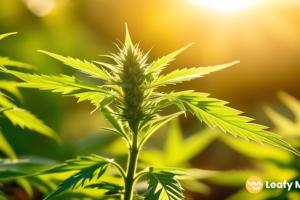
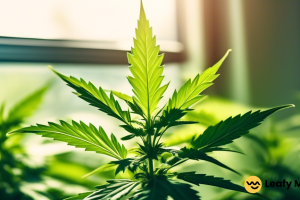





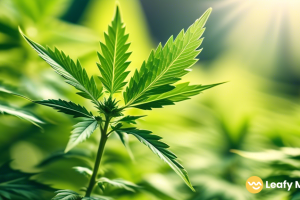
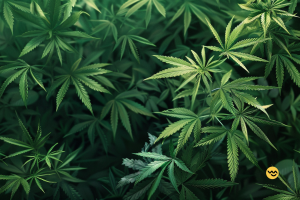
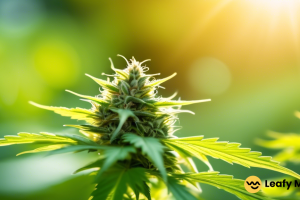
Leave a Reply